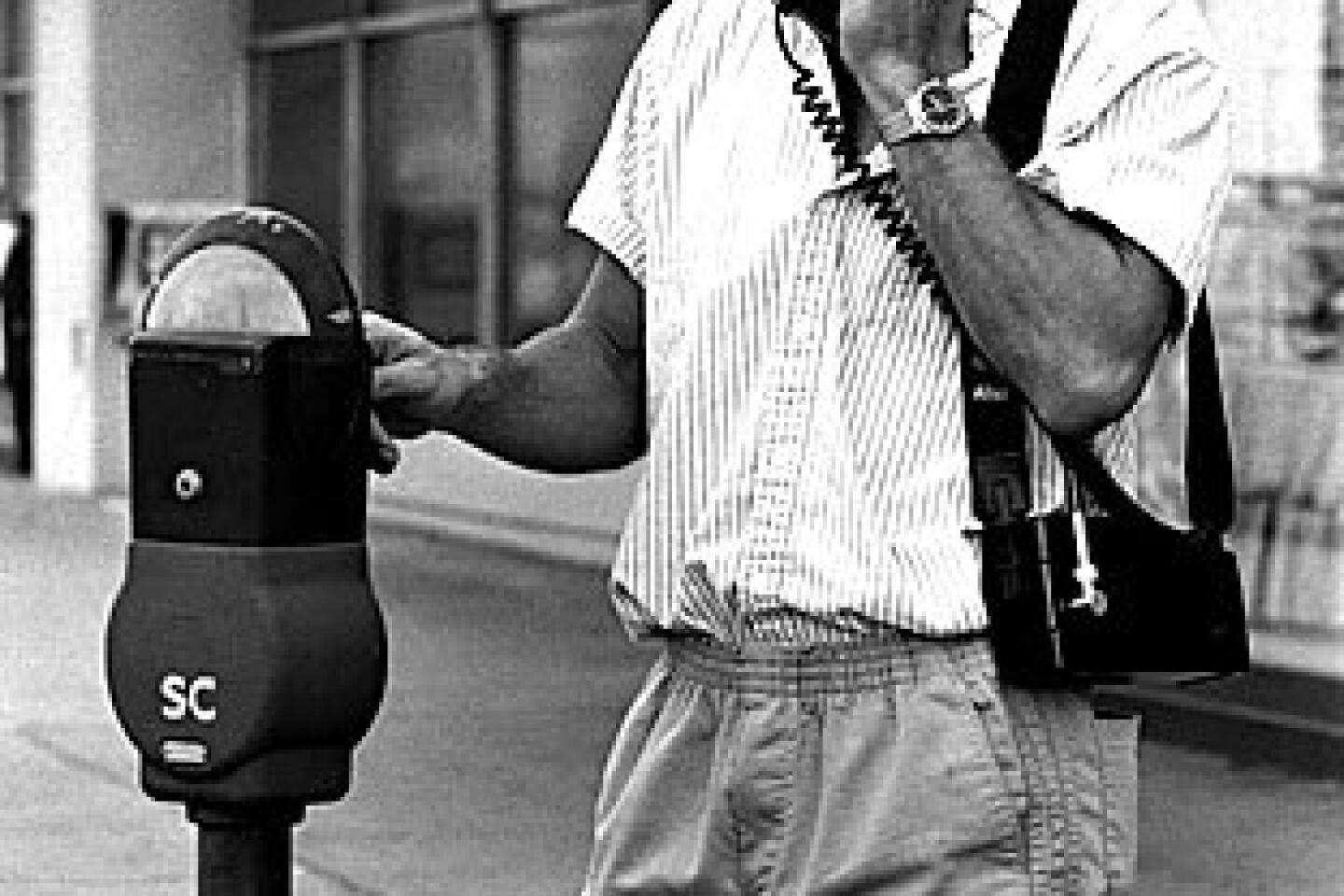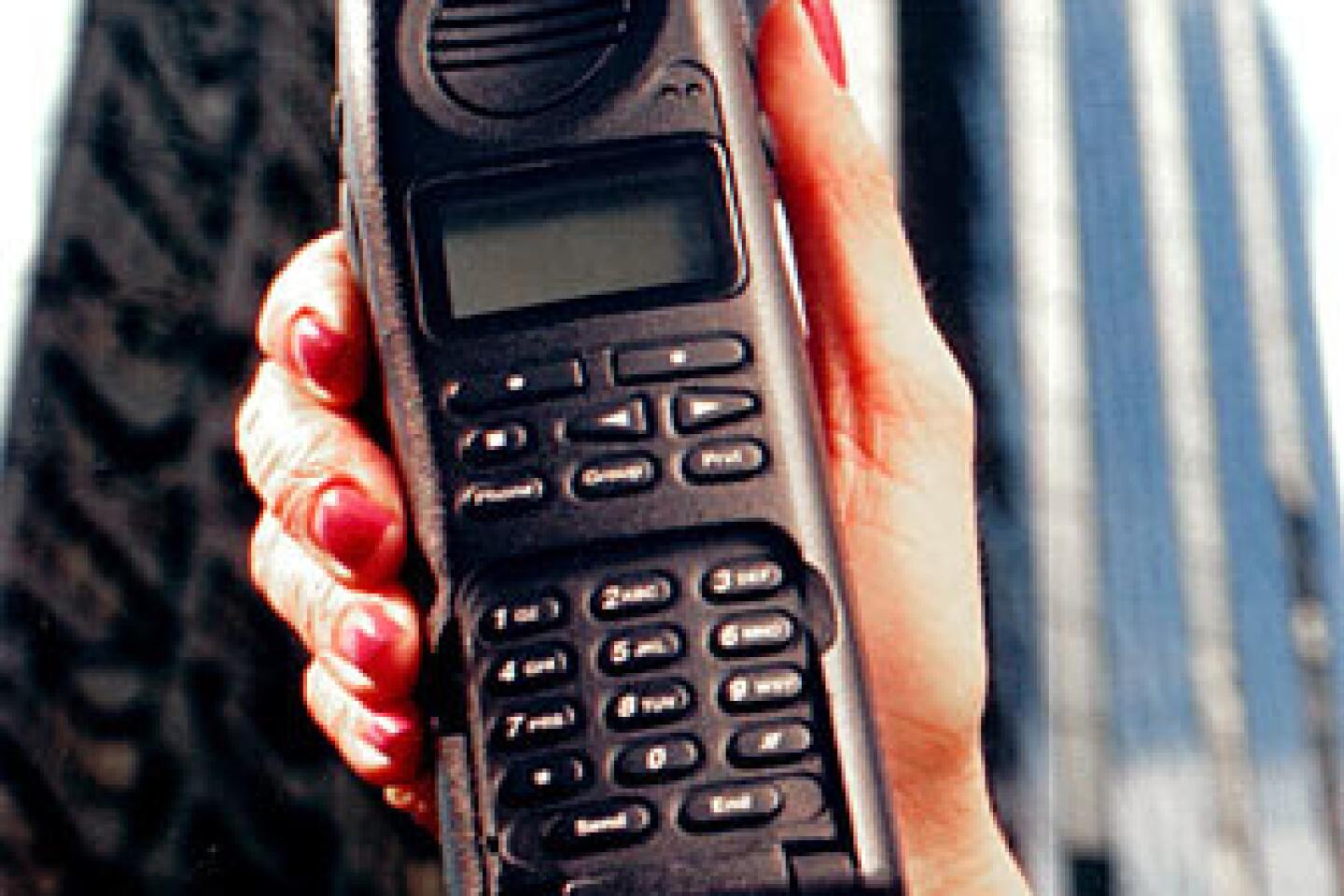An evolution from talk to text
- Share via
Bob Barnett’s phone call launched a nearly $150-billion-a-year industry.
Twenty-five years ago today, during a media event at Chicago’s Soldier Field, the president of Ameritech Mobile Communications made the nation’s first commercial cellphone connection. He rang up Alexander Graham Bell’s grandson on a Motorola DynaTAC handset that weighed 2 1/2 pounds and retailed for $3,995.
The industry has changed dramatically in the quarter-century since. Through a series of mergers, Ameritech was absorbed into what are now the nation’s largest carriers, AT&T Inc. and Verizon Wireless. Cellphones today are mainstream devices, owned by more than 80% of Americans, that can fit in a back pocket. And their primary use isn’t talking anymore. In the second quarter of this year, Americans sent more text messages on cellphones than they made calls.
That ubiquity is creating a new challenge for the industry: how to keep growing when nearly everyone who wants a cellphone has one and the price of service plans is steadily declining. Carriers are pushing more e-mail and Internet services, giving handset makers more leeway to create multiuse devices such as the iPhone and upgrading their networks to handle all the traffic.
“The amount of money they get from voice is shrinking,” Forrester Research principal analyst Charles Golvin said. “What they’ve been trying to do for quite a while is balance that loss in revenue with other kinds of applications.”
The first commercial cellphone call in the Los Angeles area, in June 1984, was nearly foiled by a dead car battery.
Mitch Mohr, founder of Los Angeles-based cellphone distributor Celluphone, was responsible for helping then-Mayor Tom Bradley call a runner carrying the Olympic torch to the city. The phone had been installed in a stretch limo, but someone left a door open after a party the night before, and the car battery ran out of juice. Luckily, Mohr had installed another phone in a red Mustang, so he called the phone from there and handed it to the mayor to complete the call.
“It was perfectly clear,” Mohr recalled.
Few people had even heard the word “cellular” when Mohr started Celluphone in 1983 -- he had to drive to the San Diego library and look up the word in the card catalog. But only a few years later, customers were shelling out $2,500 for phones that Mohr would install in their cars. His company is still in business.
Prices fell as carriers competed for customers and as technology enabled smaller handsets that people could more easily carry around.
“The thing that really made all this possible was semiconductors,” said Rudy Krolopp, one of the designers on the DynaTAC 8000X, the phone used to make the first commercial call in 1983. As chips followed the phenomenon known as Moore’s Law, becoming both smaller and more powerful, designers could fit additional features on increasingly tiny phones.
Adoption started surging about 1998, when AT&T changed its pricing plan so that long-distance, local and roaming calls all counted toward customers’ monthly minutes, making cellphone pricing much easier to understand.
By 2000, 40% of consumers had cellphones, said Roger Entner, a senior vice president at research firm Nielsen IAG. But digital technologies that allowed better call quality and lower prices have doubled adoption.
Now that cellphones are nearly ubiquitous, carriers face a new challenge: how to handle the increasing number of people using their networks to make phone calls, send text messages, surf the Web and check e-mail.
“They’re running out of capacity,” said Kenneth Dulaney, an analyst at Gartner Inc.
Text messaging already has surpassed voice calls as more cellphone owners become comfortable with tapping out short notes rather than calling someone. In the second quarter of 2008, the typical subscriber sent or received 357 text messages, compared with 204 phone calls, according to Nielsen Mobile.
That’s a boon for carriers, which generally make a lot more money from text messages than they do from voice calls. It’s much less expensive for them to transmit text messages, which come in smaller packets of data.
The mobile Web is next, and companies are jostling to provide the technology and applications used by consumers. About 11% of North American adults use the Internet on their cellphones at least once a month, and an additional 6% do it less frequently, according to Forrester.
“The Internet is trying like heck to come to your cellphone,” said John Jackson, an analyst at Yankee Group. “Everyone wants to control the experience.”
The Internet allows phone users to search for nearby restaurants, gas stations, friends and products. It provides directions and sends coupons for nearby restaurants.
Soon, it will do all of this even faster. Carriers already spend about $20 billion a year improving their networks, but a major switch to networks built specifically to accommodate Internet services and applications won’t be completed until 2011, Forrester’s Golvin said.
Until then, carriers have to walk a fine line: They want customers to use the mobile Internet, but not so frequently that the data volume overwhelms the networks and worsens the quality of voice calls.
Once the faster networks are in place, consumers will be able to take better advantage of phones that double as digital media players and Web-surfing gadgets. Next-generation handsets will allow users to talk to family and friends while watching video of them at the same time, take photographs in higher resolution and browse the Internet faster than computers with DSL connections can today.
They’ll be barely recognizable to those that made some of the first phones. But there is one constant: what a phone says about its owner.
In a recent study by research firm Harris Interactive, teens said that, with the exception of clothing, cellphones tell the most about social status or popularity.
That’s not much different from the way it was 25 years ago, said Steve Largent, president of CTIA - the Wireless Assn. Then, he played football for the Seattle Seahawks and received a DynaTAC in exchange for appearing in ads for the phone.
“I had it for the coolness factor,” he said. “It was a status symbol.”
More to Read
Inside the business of entertainment
The Wide Shot brings you news, analysis and insights on everything from streaming wars to production — and what it all means for the future.
You may occasionally receive promotional content from the Los Angeles Times.














